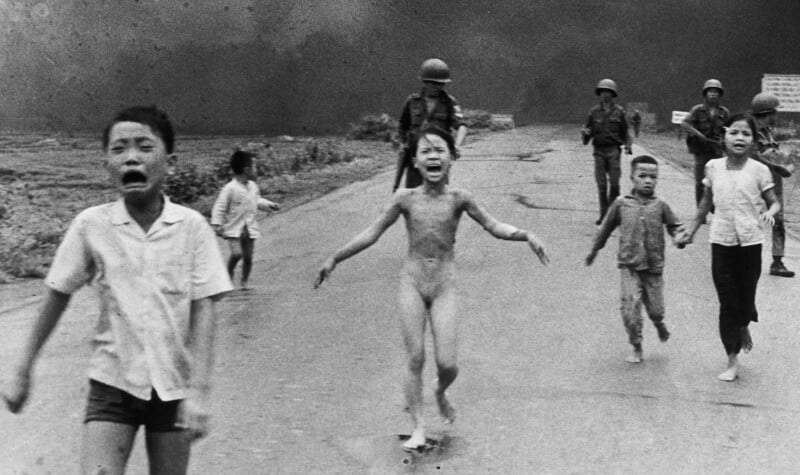Netflix Buys ‘The Stringer’, Explosive Doc That Challenged ‘Napalm Girl’ Attribution
![]()
Netflix has reportedly purchased the rights to The Stringer: The Man Who Took the Photo, the controversial documentary that asserts photographer Nick Ut did not take the photo “The Terror of War,” more commonly known as “Napalm Girl,” instead arguing that it was taken by a local stringer named Nguyễn Thành Nghệ.
The film debuted at the Sundance Film Festival earlier this year and immediately caused a stir in the industry. Prior to its debut and after it learned the film was to be released, AP spent six months rigorously investigating the claim that Ut was not the photographer and eventually refuted the primary claim in the film.
“AP’s sole interest in conducting an investigation into the famous AP photo, ‘The Terror of War,’ commonly known as ‘Napalm Girl,’ is ensuring authorship of the iconic image is fairly and accurately recorded. AP has historically not shied away from taking a hard look at its past, and that is indeed what The Associated Press has done here,” the report reads.

“No one is disputing the accuracy of the image, nor that the image is AP’s. The goal of this investigation is purely to establish an accurate historical record. No one who worked for AP involved on either side of this story remains at the company. All have died, retired, or left. A team of AP journalists has spent almost a year investigating this image, which for more than 50 years was believed to have been taken by Huynh Cong Ut, known as Nick Ut.”
PetaPixel has repeatedly asked the VII Foundation, the production company, for a screening of The Stringer but has thus far been denied, as the production company claims no digital screenings are available. According to Deadline and The Wrap, Netflix acquired the rights to stream the documentary today, which means it will be available widely soon.
The documentary is supposedly heavily based on the input of Associated Press photo editor Carl Robinson, who was working at the Saigon bureau the day when the photograph was taken. While the executive producer of the documentary says that the movie doesn’t hinge on Robinson’s input, PetaPixel was told by the AP that Gary Knight, co-founder of the VII photo agency, revealed that Robinson was central to the documentary.
The established story of The Terror of War states that upon seeing the photo, Robinson believed the full-frontal nudity in the image rendered it unusable. But he was overruled by his boss, chief of photos in Saigon, Horst Faas, who then ordered it to be sent on to AP’s headquarters in New York City, where AP’s photo chief Hal Buell agreed it should be printed.

Robinson claims that as part of this process, he was also told to change the credit to Nick Ut, due to what the documentary’s executive producer Gary Knight asserts was Faas’s loyalty to Ut.
Ut won both the 1973 Pulitzer Prize for Spot News Photography and the 1973 World Press Photo of the Year for the image. Since the documentary screened, however, World Press Photo suspended Ut’s credit on the image (an action that caused 400 photographers to demand it be changed back). AP has not changed the credit.
“No one else ever came forward claiming that my image was not mine, no one ever confronted me about my photo, and this is also the first time I heard the story that it was a stringer’s film. All film was labeled and marked with each person’s name at the office before developing, and matched by the label to the envelopes with the photographer’s names. Our system at the AP Saigon was fail-proof when it came to which negatives belonged to who,” Ut wrote in February, a month after he said he planned to file a defamation lawsuit against the documentary’s producers.
“I took the photo of Kim Phuc, I took the other photos from that day that show her family and the devastation the war caused. No one else has the right to claim that I did not take that specific or any other photo attributed to me because I am the creator of all the work I’ve done since day one. My career spans more than 50 years and, although I am now retired from the AP, I continue to create impacting images for the world to see.”
Netflix has not publicly confirmed the report nor has it published a timeline for when the documentary will be available to stream, although The Wrap claims it will release in 2025.